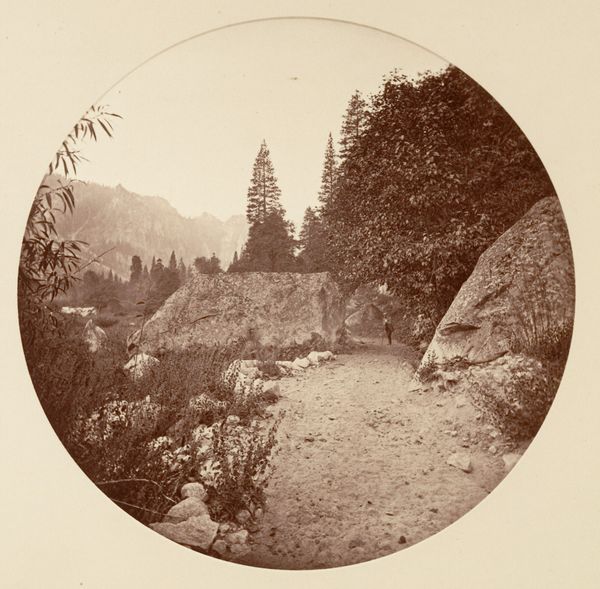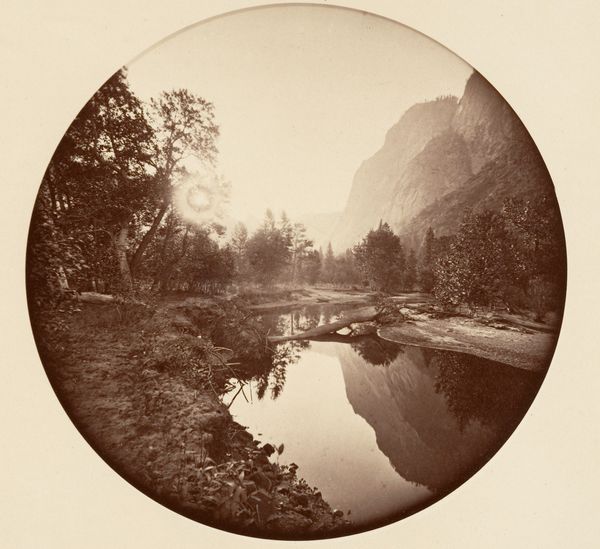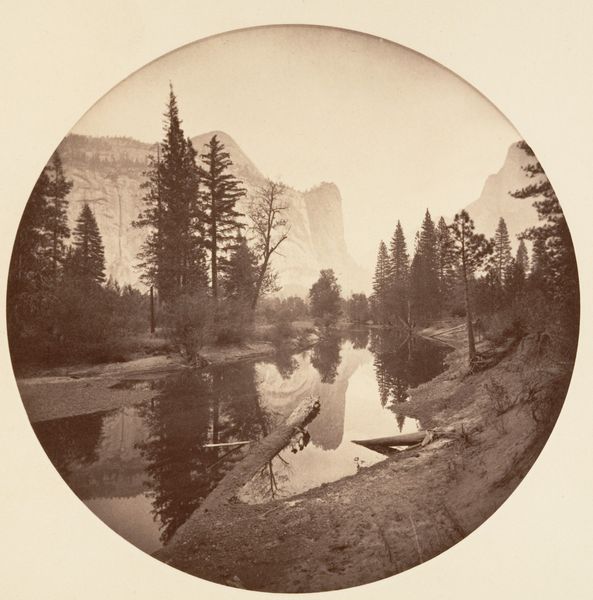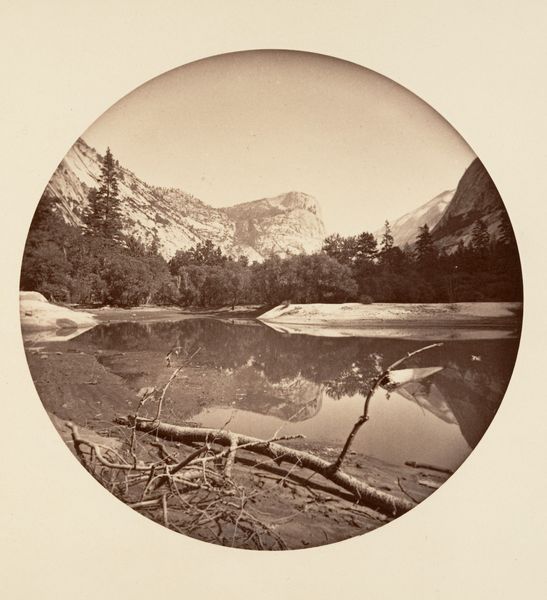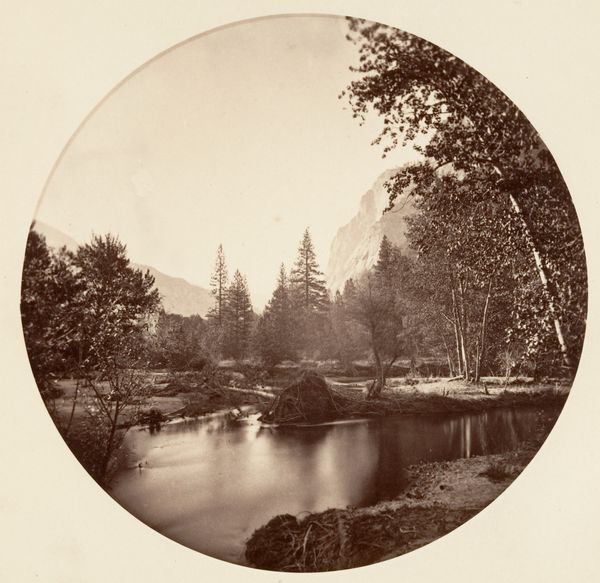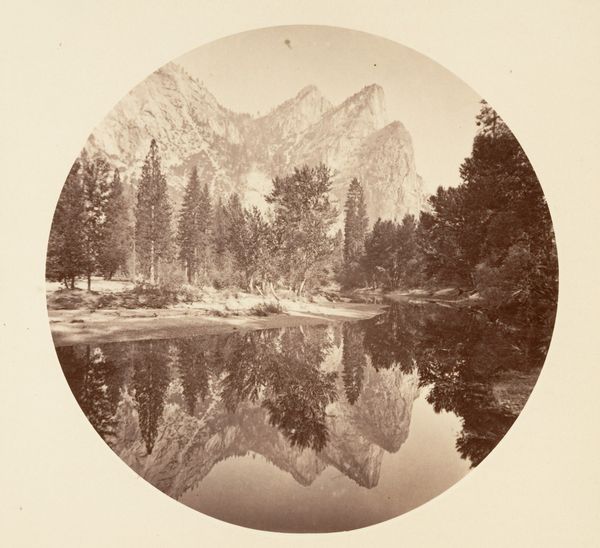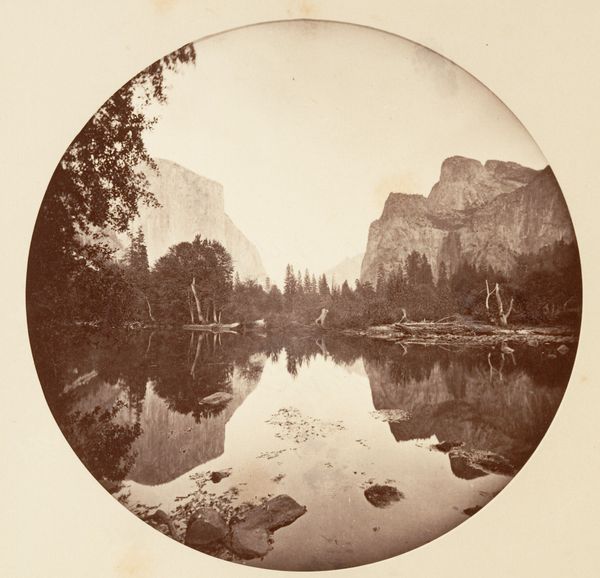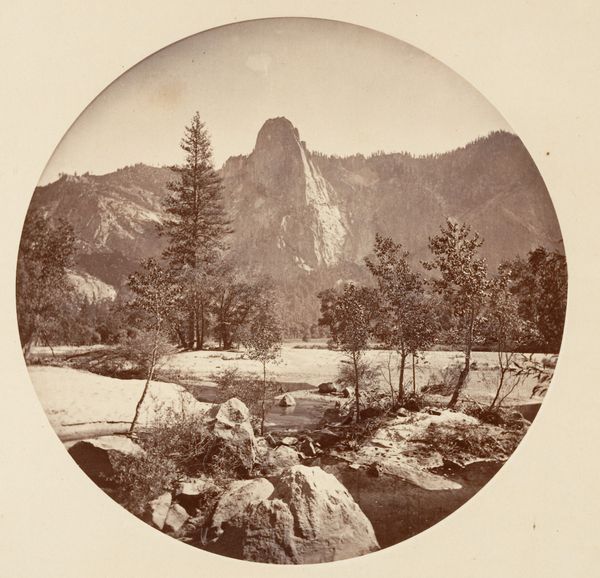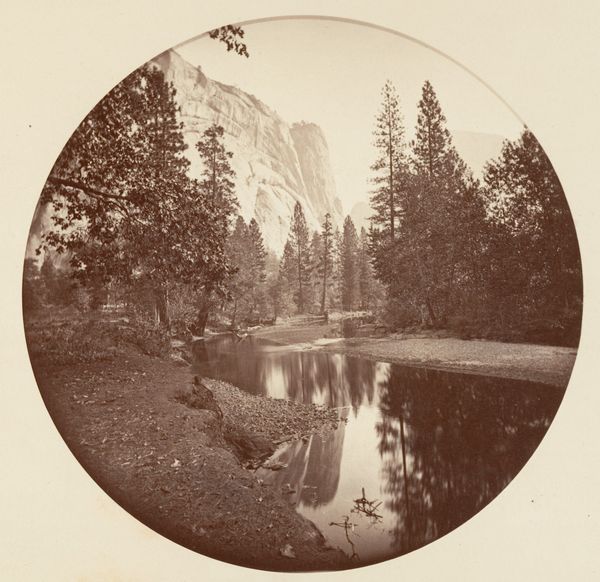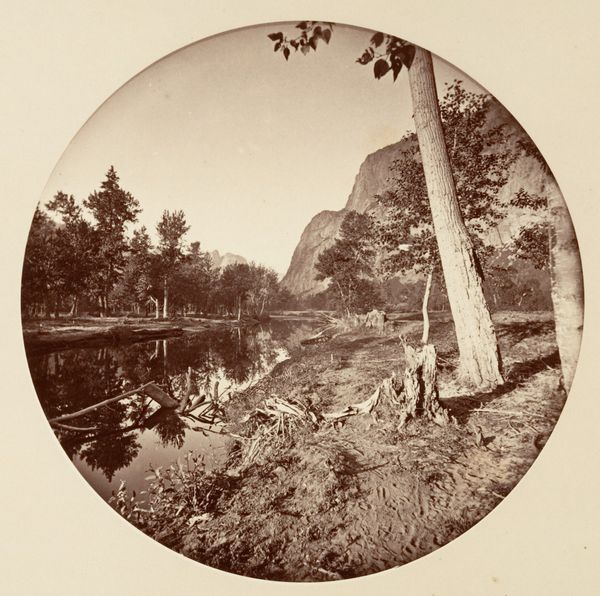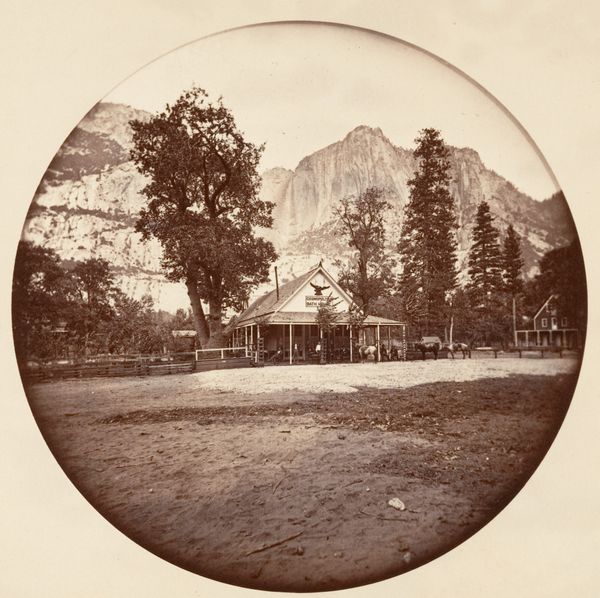![[Yosemite National Park, California] by Carleton E. Watkins](/_next/image?url=https%3A%2F%2Fd2w8kbdekdi1gv.cloudfront.net%2FeyJidWNrZXQiOiAiYXJ0ZXJhLWltYWdlcy1idWNrZXQiLCAia2V5IjogImFydHdvcmtzLzJjMmZmMGY5LWUzYjMtNDRlZi04NjZkLWVmYmQ3YjQ3MTc5Ni8yYzJmZjBmOS1lM2IzLTQ0ZWYtODY2ZC1lZmJkN2I0NzE3OTZfZnVsbC5qcGciLCAiZWRpdHMiOiB7InJlc2l6ZSI6IHsid2lkdGgiOiAxOTIwLCAiaGVpZ2h0IjogMTkyMCwgImZpdCI6ICJpbnNpZGUifX19&w=3840&q=75)
#
pencil drawn
#
shape in negative space
#
light pencil work
#
pencil sketch
#
old engraving style
#
landscape
#
charcoal drawing
#
charcoal art
#
pencil drawing
#
surrealism
#
shape of cloud
Dimensions: Image: 12.5 x 12.5 cm (4 15/16 x 4 15/16 in.), circular Album page: 24 x 25.1 cm (9 7/16 x 9 7/8 in.)
Copyright: Public Domain
Editor: Here we have Carleton Watkins' photograph, "[Yosemite National Park, California]," taken sometime between 1876 and 1880. The sepia tones give it such a serene and almost melancholic feel. What do you see when you look at this photograph? Curator: I see a potent visual document intertwined with complex histories of land, power, and representation. Watkins, like many landscape photographers of his time, played a significant role in shaping perceptions – and the economic exploitation – of the American West. We must question whose vision is prioritized here and at what cost. Editor: Whose vision do you mean? Curator: Think about it. Watkins’s images helped fuel the narrative of Manifest Destiny, contributing to the displacement and erasure of indigenous populations. His romanticized view of untouched wilderness obscures the realities of colonization and environmental degradation that were already underway. Does the pristine wilderness on display here align with the experience of those living there before its "discovery"? Editor: I never really considered the role of photography in colonization... Curator: Photography was instrumental! It provided visual evidence for a specific narrative that was tied to politics. Images like these were often used to encourage settlement and resource extraction, reinforcing the idea of the West as a landscape ripe for the taking. Where are the Indigenous stewards of this land in this image? What stories are silenced by their absence? Editor: It is such a beautiful photo, but I see your point, this is not simply an innocent landscape. So how should we approach such problematic images today? Curator: By engaging critically! Acknowledging the complex and often contradictory layers of meaning is vital, using art history to expose the uncomfortable truths behind seemingly beautiful images. Editor: I'll definitely be viewing landscape photography differently now!
Comments
No comments
Be the first to comment and join the conversation on the ultimate creative platform.
